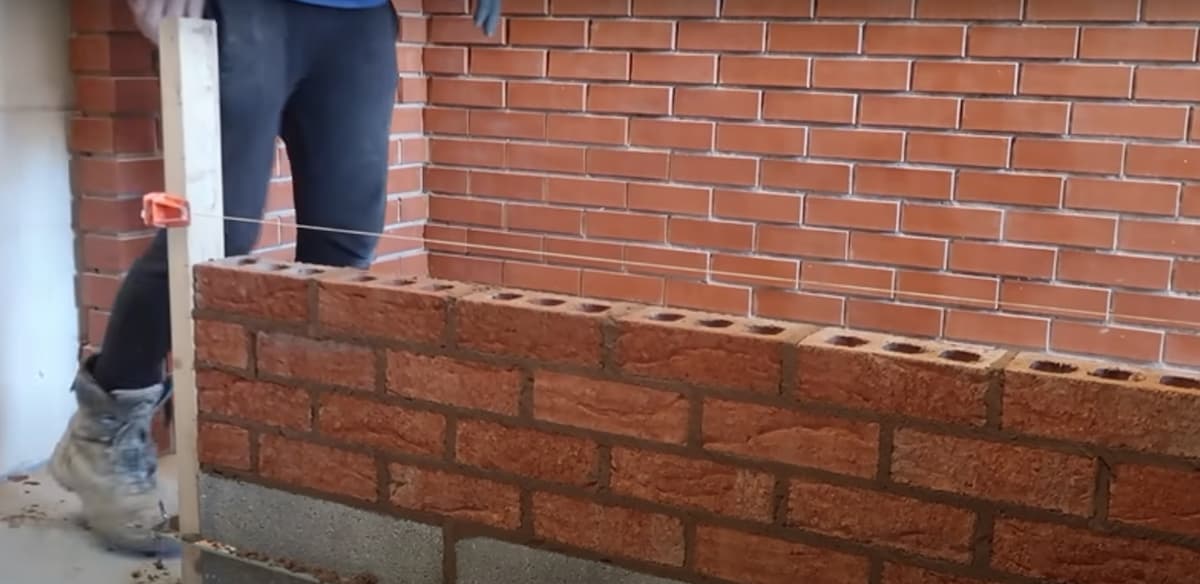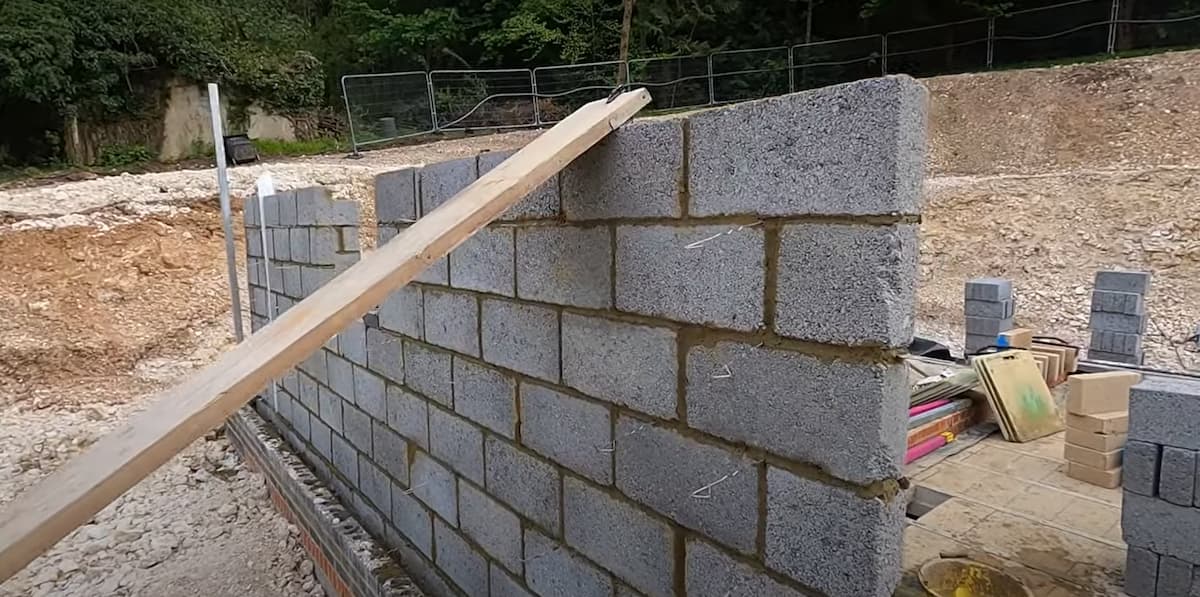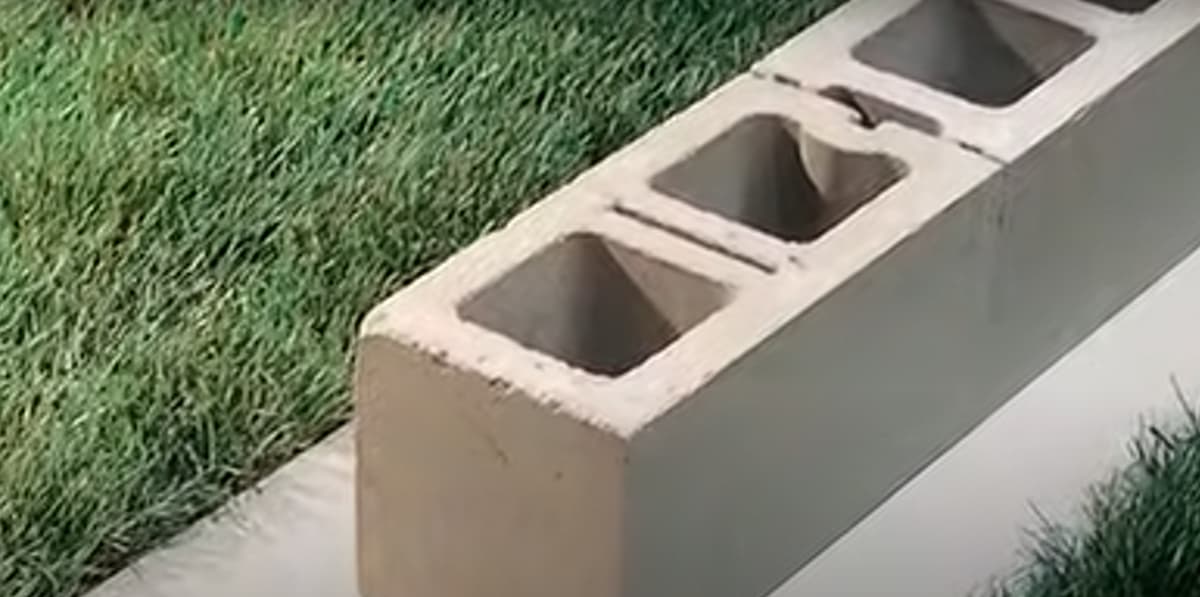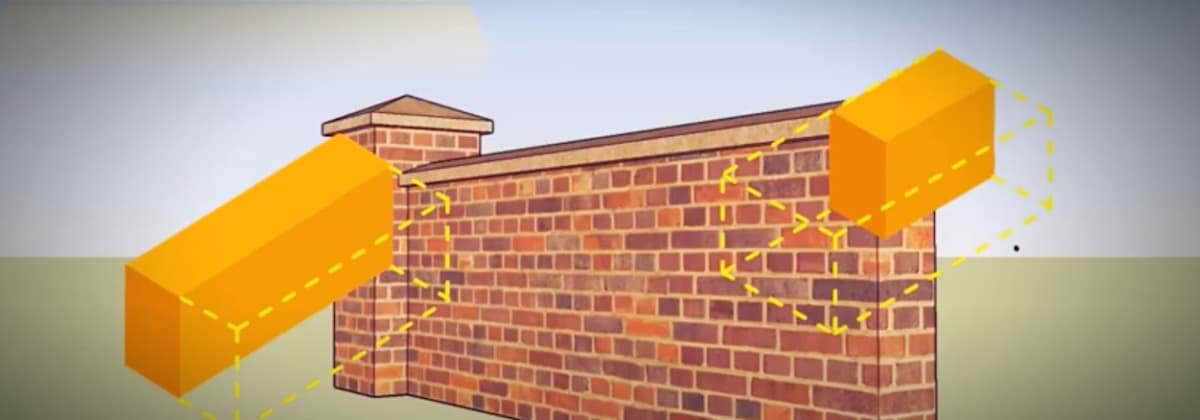
The average brick measure 76mm high, 230mm long and 110mm wide and is composed of a clay mixture that has been fired in a kiln at around 1,400 degrees Celsius (2,552 degrees Fahrenheit). This process produces high-purity alumina crystals uniformly dispersed throughout the body of each brick. There are many brick sizes to choose from.
Brick is one of the most common types of building material used today worldwide. It’s called such because it’s long and rectangular-shaped like a block or ‘brick.’ This shape allows for better stacking and makes them more durable than most other building materials. A brick can be modulated to suit many different uses depending on how they’re designed:
- Modern construction with steel studs and concrete blocks
- An inner lining for small outdoor spaces, with a waterproofing membrane
- Or for an individual facade
Bricks can be made in most soils, even ones with high clay content where the soil is sticky rather than crumbly. This makes them easy to manufacture locally, cutting out transportation costs and polluting emissions from transporting mined raw materials around the world. Bricks are also able to be produced near construction sites which reduce overall construction costs significantly compared to bricks that need to be transported over long distances.
Standard Brick Dimension
Brick sizes may vary slightly depending on the region, but most bricks measure 233mm by 115.5mm by 65mm high. A few variations of brick dimensions most common include:
Masonry brick is larger and thicker at 80mm x 254mm x 127 mm for length, width, and height respectively. Brick pavers are smaller at 215mm x 102 mm x 102mm.
Brick Dimensions
The denser the clay used to make a brick, the more thermal energy it can store and the better insulation properties it may have. A typical modern brick has an insulative value of around R-3.5 which means it reduces heat flow by 3.5 times compared to bare soil or water so if you double up your bricks this rises to 7 times less heat flow than normal. Increased insulation makes them ideal for underfloor heating systems, walls and double glazing applications in houses and offices for example where keeping warm is important. In some places, bricks were even used as an outer layer of protection against the cold.
Brick Heights
Bricks naturally have air pockets within their structure which can be seen under a microscope as tiny holes, this won’t make much of a difference to the bricks insulation properties but it does make them very good sound absorbers. So if you are looking for somewhere to live that is quiet, then surrounding yourself with brick walls might be something worth considering. Brickwork also reduces noise between rooms by up to 50% making it an efficient way to keep noise levels down. Brick sizes may vary but bricks are generally laid with a 10mm gap between them to make allowance for this.
Standard Brick Size
Modern homes usually use a type of concrete block instead of real bricks due to their ease of use and overall construction speed. This can be seen as an overall benefit for building houses quickly but it also has some disadvantages because concrete blocks aren’t as good insulators as bricks. Concrete blocks can crack or break more easily if they need to be moved around during the construction process, this is especially hazardous on building sites where accidents involving dropped materials are common.
Brick Dimensions Australia
Building with bricks allows for complex shapes and structures which can be used to make aesthetically pleasing buildings. You can build upwards as well as sideways, we’re all familiar with the concept of stacking building blocks on top of each other and this is what’s happening when we build walls using bricks. The main difference here is that bricks don’t need to be carefully balanced and arranged like a tower block, they simply need to be placed adjacent to one another in some sort of pattern.
Compared to other building materials such as wood and concrete, bricks are quite heavy. So as well as using a lot of energy to produce them, they may also require extra effort during the construction process. However, this is more than balanced out by their durability which exceeds that of both wood and concrete. Bricks can last for up to 200 years whereas good quality pre-cast concrete structures only have a lifespan of around 50 years and less if they’re poorly maintained.
Brick Dimensions Table Australia
Brick dimensions in Australia are 76mm high x 230mm long x 110mm wide. There are different brick sizes and brick types available such as masonry brick which is larger and thicker at 80mm x 254mm x 127 mm for length, width, and height respectively. Brick pavers are also smaller at 215mm x 102 mm x 102mm.
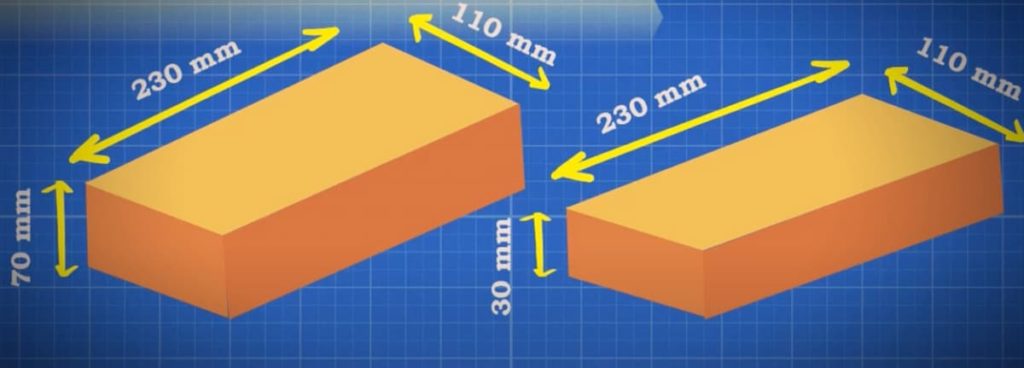
Standard Brick Dimensions
Brick pavers are an alternative option where aesthetics are more important than building speed or insulation properties. These types of brick are usually thinner but wider at 215mm x 102mm instead of 233mm x 115.5mm so that they look obviously different from normal bricks.
Brick Course Chart
Bricks also have a very long history and some of the earliest examples we know about come from around 7,000 BC. Egyptian and Babylonian buildings incorporated them into their construction and this practice has continued on for millennia, many of the most popular architectural styles today incorporate some form of brickwork as part of their structure.
Brick Dimension
When the brick and mortar are sandwiched together, a “course” is a measurement that refers to both the dimensions of the brick AND mortar. Course bricks consists of one brick and one layer of mortar. The standard course brick size and brick dimensions are around 86mm.
Brick Size Australia
Bricks sizes are a standardised measure for their overall length and width. If you were to look at bricks from a cross-section, you would notice that around the middle they have a slightly smaller diameter than at the top or bottom which is where the dimensions come from. Australian brick sizes typically range from 190mm to 215mm which means that if you were to fit a brick inside as part of the building structure it would fit around 190mm from one edge of the brick to another. The size of this type of brick always matters.
Standard Brick Dims
There are several options of where you can purchase your brick from depending on what your budget and location are. Some supplies only sell new bricks while others sell both used and new ones too. There are also some online suppliers who may deliver straight to your door way which means that you don’t need to waste time driving around looking for bricks at all or worse still ending up with the wrong type or number altogether.
Dimension of Brick
Even if you do decide not to use bricks there are still ways of achieving stylish architectural designs with alternative materials such as stone, cement render, pre-cast concrete, glass, and steel.
Height of a Brick
The brick size and height in the UK is different than in Australia. The dimensions for brick height in the UK are 215mm, with widths ranging between 75mm to 215mm and lengths of 102mm to 215mm. The average isn’t 76mm high x 230mm long x 110mm wide.
Standard Brick Size Australia
Bricks have many uses but they’re typically used for construction purposes mainly because they provide a safe and durable foundation that won’t falter under stress, making them a very cost-effective option for most buildings. If you’re looking at constructing a new home or building an extension on your current property then using bricks may make your job much easier due to their versatility and durability compared to other materials such as wood
Brickwork Dimensions Australia
The most important tip for any kind of wall or brickwork is to be sure that you have a solid foundation. The only way to guarantee this is to follow the manufacturer’s instructions which could have been laid out by an architect or engineer who may be able to create a structure that follows all relevant safety guidelines. This includes checking the levelness of your foundation as well as digging deep enough so that frost can’t penetrate into the ground underneath where your wall may be building up. Your bricks could also be levelled before they’re placed onto the foundation because otherwise, you’ll end up with uneven bricks that don’t stack correctly which means there may not even be any mortar between adjacent course bricks on either side. Once you have all of these things in place, you’re ready to start building your brick wall.
Brick Width
The brick size and width is different and depends on the building products and overall quality levels. Since there are many brick sizes available, typical clay bricks are 230mm high, 102mm wide and 76mm deep.
Standard Brick Width
A standard face brick width is 115mm and a standard cavity wall brick width is 120mm. A standard face brick can be laid in different ways which you could check with your supplier before buying. Make sure that the cavity is filled with mortar before you start applying any face brick because you don’t want to create any unnecessary gaps in your wall.
Size of Standard Brick
The standard face brick size and average brick dimension are 225mm x 112.5mm x 75mm. However, this size can vary depending on the supplier and product quality.


